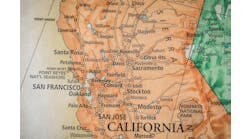The May/June Healthcare Innovation cover story focused on the future of health information exchanges (HIEs) in the U.S. healthcare system. Despite some of the large challenges facing HIEs in the near future, as Editor-in-Chief Mark Hagland wrote, “The idea of creating semi-independent organizations to facilitate the appropriate sharing of clinical and related data between and among providers and between and among providers, payers, public health agencies, and so on, retains its appeal as a concept. The challenge remains in the details: what precisely should HIEs be doing, with and for whom, and on what economic or financial basis?”
And, Hagland wrote, “In that regard, the COVID-19 pandemic has had a major impact on the ever-evolving HIE sector. Those HIEs that were already operating on a statewide level, and that already had in place some kind of ongoing working relationship with their state health departments, found themselves well-positioned to play a key role in the pandemic—that of important link between public health and patient care organizations. CRISP, the Columbia, Maryland-based HIE that is the designated statewide HIE for Maryland and also for the District of Columbia, is one of several HIEs that have made important inroads in that area. IHIE, the Indianapolis-based Indiana Health Information Exchange, also found itself very well-positioned at the outset of the pandemic, because of its already established tight relationship with the Indiana State Department of Health. A number of other statewide HIEs had also established such relationships, which put them in enviable positions last year, as the need for the exchange of data around COVID-19 testing, COVID-related inpatient and other utilization, and other data, became extremely important.”
Among the HIE leaders whom Hagland interviewed for the cover story was David Horrocks, who has been involved with CRISP for twelve years, and has been organization’s CEO since 2009.
The HIE notes on its website that, “As clinical information is created and shared with CRISP, it is made accessible in near real-time to participating health care providers through the CRISP tools. Providers have the ability to securely look up patient information through the internet. CRISP tools retrieve clinical data from participants and displays it in a view-only screen at the point of care. CRISP clinical data is available through the CRISP Unified Landing Page at no cost to clinical staff. As clinical information is created and shared with CRISP, it is made accessible in real-time to participating healthcare providers across institutional boundaries through the CRISP Health Records portal. The portal gives providers the ability to securely look up patient information via their browser. It retrieves clinical data from participants and displays it in a view-only screen at the point of care,” the website notes. And, speaking of its “Patient Snapshot” feature, it notes that “The Patient Care Snapshot combines critical information relevant to your role in the patient’s care. It displays data from a variety of sources to provide an at-a-glance view of the patient’s clinical history. Information is presented from a compilation of care management data alongside real-time hospital encounter feeds, up-to-date demographic information, patient to care provider attribution, and clinical summaries of care from our real-time interfaces with providers across the region.”
In the interview for the cover story, which took place in April, Hagland and Horrocks discussed some of the advances that CRISP has made in the past year-and-a-half, including around public health reporting during the pandemic. Below are excerpts from their interview.
Whare are some of the more leading-edge things that you and your colleagues have been doing at CRISP?
The past year, of course, has been defined in the ways we’ve been serving in the COVID pandemic. CRISP is Maryland’s state-designated HIE, but our technology hub is also used by WVHIN of West Virginia, CRISP-DC, and CONNIE in Connecticut. But the most impressive things we’re doing tend to be in Maryland, where we’re the most mature. In Maryland, where we have all this history with the Department of Health and Medicaid, and other entities, we were well-positioned to be a data hub around COVID. For instance, when the state stood up COVID testing in the vehicle emissions testing locations, they needed a scheduling mechanism. So we provided that, and made sure that the results got routed back to physicians. And that wasn’t something we had set out to do in January 2020, but it was needed in April 2020.
Probably the most significant thing we do is data analytics. We receive identified data from numerous sources. And we can put those types of data together. For example, the nation has struggled to get accurate race and ethnicity data; but when you put together COVID testing with medications and prior lab tests, claims data and prior hospitalizations, you’re able to really enhance the COVID testing files with better race and ethnicity data. Let’s say you want to ask, who among those who’ve tested positive, has been admitted to the hospital? You can get that through your hospitalization data, but if you want to understand the percentage of those who have been tested positive and who’ve been hospitalized, you have to combine those two types of data. And if you want to collate that with those with identified chronic conditions, you can use claims data to do that. We were uniquely positioned to do that, because we hold a lot of identified data, as a trusted steward of data. I think that that’s been our most important role in the pandemic; and it will continue to be.
Can you share a couple of examples of how that’s been playing out?
Certainly. Let’s say you want to understand reinfections for people who have tested positive, or infections of those vaccinated. You’ll need the immunization data and the testing data. The immunization data will be by date, for example. And might there be socioeconomic factors? And who among those who test positive are subsequently hospitalized? Well, then you need hospitalization data. And how many who are hospitalized, after being tested and inoculated, and how many end up dying? Well, you need all those different data sets.
How difficult, on a scale of 1 to 10, is it to create these kinds of data architectures?
Well, if you said, I want you to go to a nearby state and build this, when they have nothing, that might be a “10.” But the state of Maryland has made investments and policy choices over time, including mandatory reporting or participation, that have driven up the participation in this process. So it’s been a “3” or a “4”; however, it’s only been because of the significant efforts and investments that everybody has already engaged in.
So all the successes you’ve been having have been having, have been based on foundations previously laid, correct?
Correct.
What are the biggest learnings that you and your colleagues have had so far in the pandemic?
We’ve taken on the calling to serve as a public health utility. So the HIE needs to be statewide; it needs to be partnered closely with public health; its purposes need to be public health-oriented. Public health needs to be in the charter. Third, they need to be receiving portions of the data via mandate, because completeness of the data is essential, in order to serve in this role. And fourth, I would say, they need to be regulated to protect patient privacy. Because in order for this to work, you’ve got to put so much identified data into it, and you just can’t do that without putting protections in place. We are not allowed to do anything with the data that we’re not explicitly given permission to do.
And I think these entities should be statewide. The smaller states should not be building their own infrastructures to do this. A spoke infrastructure is expensive, and the economies of scale are pronounced. That’s why we have four states that will be sharing infrastructure. The fact is that the privacy and security investments alone would be prohibitive for small states. If we have to spend $2 million a year on privacy and security work, and a small state’s budget is only $1 million, well, that’s a problem. But, with four HIEs operating collaboratively, the economies of scale are exciting. And if something innovative that’s working in the District, we get to use them then in West Virginia and Connecticut. So the sharing of innovation is very helpful. We like having a non-profit affiliated with the state, where there are local folks involved, where this becomes a collaboration. That’s why we have four separate non-profits that are affiliated.
And the economies of scale are exciting. And if something innovative that’s working in the District, we get to use it then in West Virginia and Connecticut. So the sharing of innovation is very helpful. We like having a non-profit affiliated with the state, where there are local folks involved, where this becomes a collaboration. That’s why we have four separate non-profits that are affiliated.
Are there any challenges involved in operating in four states at the same time?
Well, of course, there are challenges; and there has to be some give-and-take, because if everyone decides to affiliate, but everyone makes their own decisions about everything and they don’t coordinate, then you’ll lose all of the benefits of scale. So you do need to try to coordinate among the various stakeholders around what the top priorities are, among all the states involved. And that is an ongoing challenge; but it’s not different from what we as HIEs have always had to do, with lots of stakeholders with lots of priorities; we’re just doing that across a little bit broader geography now.
Funding has dried up in the past few years, and many HIEs have shuttered. How have you and others done so well?
Yes, Indiana, Colorado, Arizona, and Nebraska have partnered with each other; and Colorado and Nebraska have partnered. And Nebraska is working with Iowa; and Michigan is going to be working with Missouri. All of these are statewide organizations. They are designated and partnered with their public health folks; and they have public health purposes as part of their mission. And I look at situations where we’ve struggled as an industry—and there, you have regional HIEs allowed to compete, and that has not worked as well. I also think that HIEs that focus primarily just on clinical document transport, that is now becoming easier with the national networks, so in a couple of years, it won’t be necessary to bring in a heavyweight intermediary to do that. So the HIEs that have focused solely on that use case—well, their value proposition is eroding, as the technology advances.
How do you think things might evolve forward in the next couple of years?
There is a lot of uncertainty. Honestly, we are trying to make a case for the health data utility model, which is what we have, and what those other states have that I’ve mentioned. And when you partner with public health and can combine data in ways that would be difficult otherwise—we’re advocating for that. And if in the wake of the pandemic, the nation decides to make investments along those lines, we have an opportunity to have an impact. If on the other hand, the policy-makers look solely at HIE 1.0, and decide that it didn’t work well, we’re concerned that—we wouldn’t want to be tarnished where we’re doing really good work; that’s concern.
Is there anything that you think that ONC should be thinking about right now?
Micky is so forward-thinking. I think that Micky is very optimistic about national networks and new transport mechanisms, and what private industry will be able to achieve, and I agree with him. I think it all makes sense. What I’d love for Micky to be contemplating is that unique role of that non-profit public health data utility, and how do we get that in every state? I’d like Micky to think about that. Not moving CCDs around, not serving payers with encounter data; the market is kind of taking care of those things. But, combining data for insights that support public health and healthcare leaders—how do we get that everywhere? And maybe, do we start with the places that have made a very good start, the 10 or 12 states where we’ve got a decent foundation—do we press ahead with them, to prove it out further, and then pivot to bring it to all 50 states?


